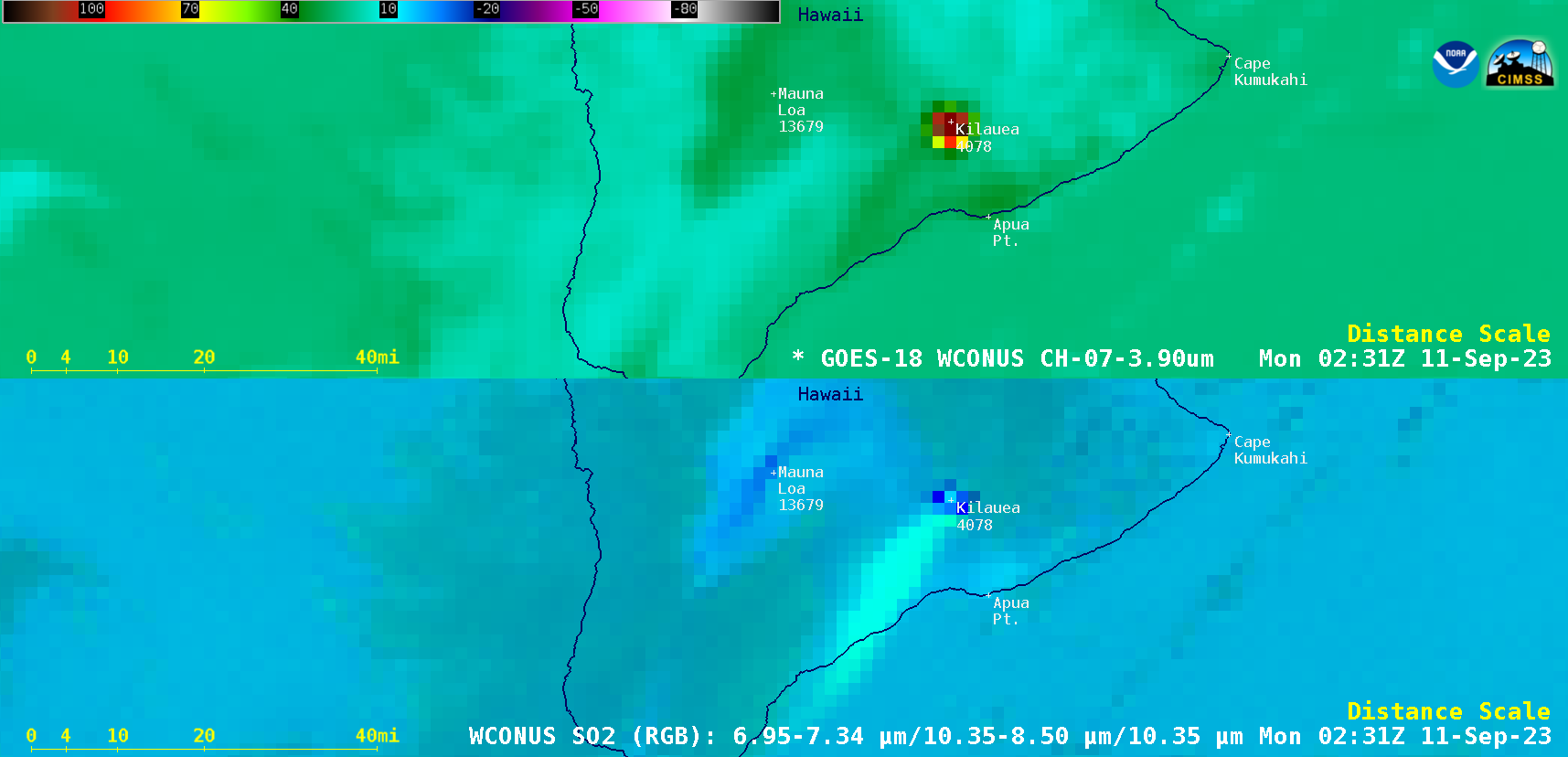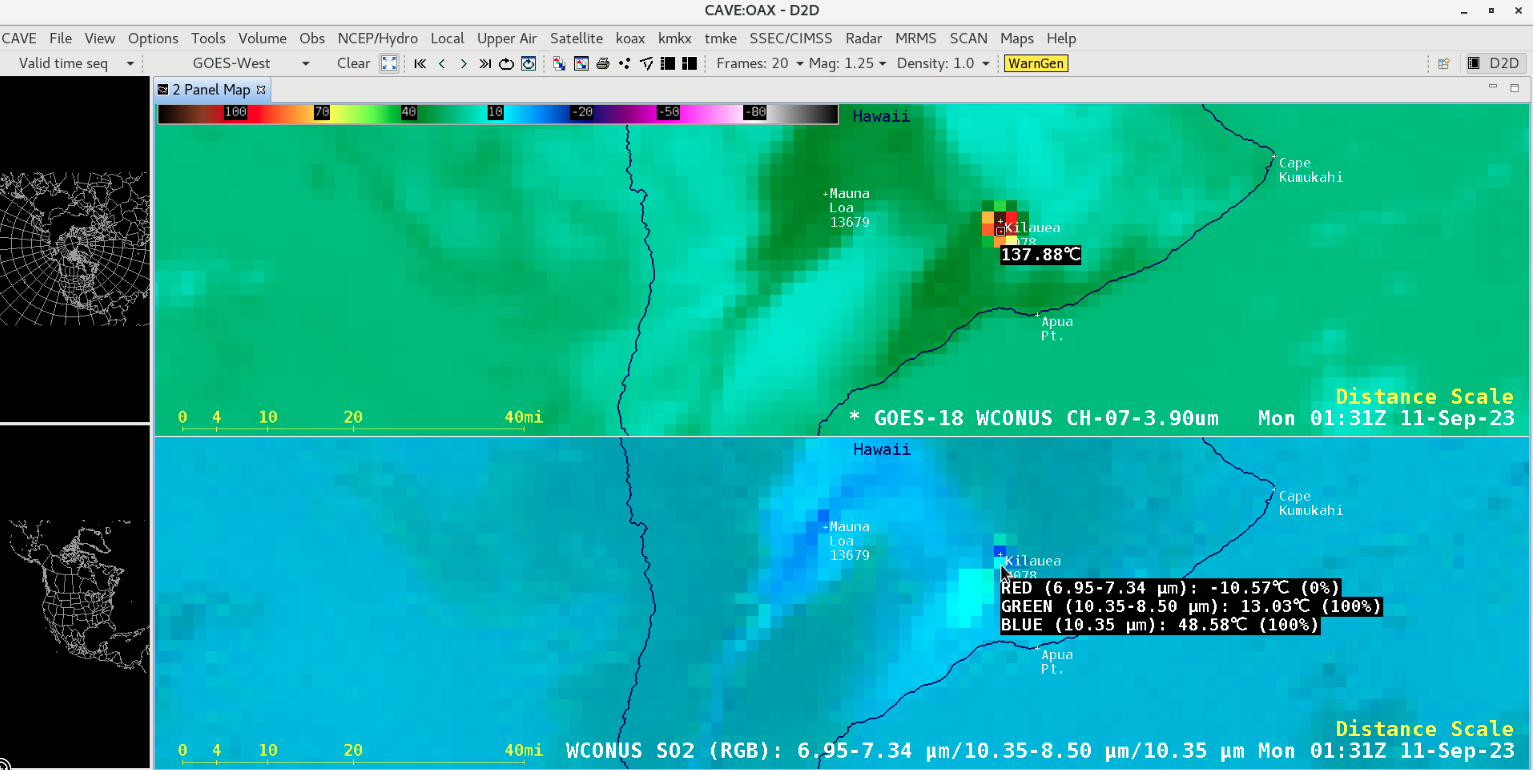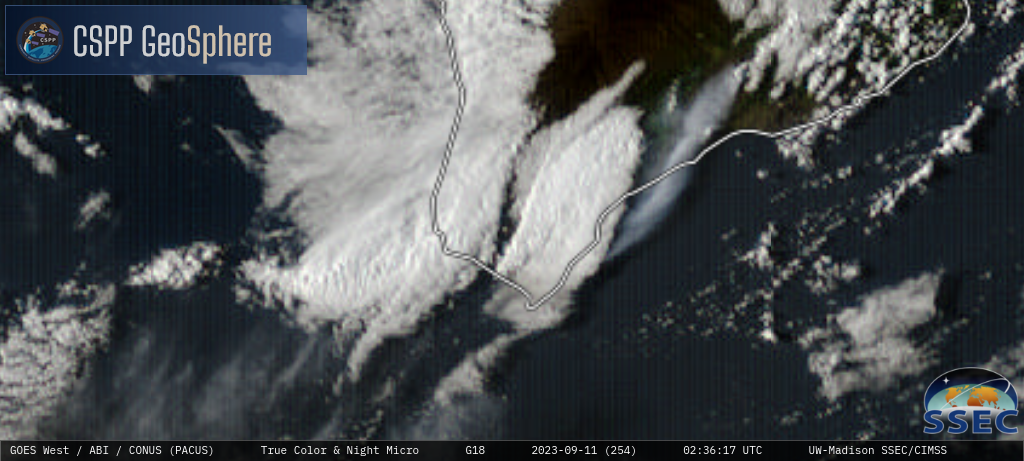Eruption of Kilauea on the Big Island of Hawai`i

GOES-18 Shortwave Infrared (3.9 µm, top) and SO2 RGB images (bottom), from 0051-0231 UTC on 11 September [click to play animated GIF | MP4]
The Kilauea eruption began at 0115 UTC on 11 September (3:15 PM HST on 10 September) — and about 15 minutes later, the GOES-18 3.9 µm Shortwave Infrared brightness temperature sensed at the volcano summit reached 137.88ºC (below) — which is the saturation temperature of GOES-18 ABI Band 7 detectors.

Cursor sample of GOES-18 Shortwave Infrared (3.9 µm, top) and SO2 RGB (bottom) images at 0131 UTC [click to enlarge]

GOES-18 True Color RGB + Nighttime Microphysics RGB images, 0056-1101 UTC on 11 September [click to play MP4 animation]

GOES-18 Shortwave Infrared (3.9 µm) and SO2 RGB images, 0051-1101 UTC on 11 September [click to play animated GIF | MP4]


